Abstract
BACKGROUND--Patients who have their pupils dilated for an eye examination traditionally have to wait several hours before their pupils return to normal size and their blurred vision (caused by paralysis of accommodation) resolves. Earlier studies with dapiprazole have demonstrated an accelerated reversal of dilatation. METHODS--Three regimens of dapiprazole were studied to determine the effects on pupil diameter and accommodation after mydriasis produced by 2.5% phenylephrine and 0.5% tropicamide. Test regimens included one drop and 1 + 1 drop regimens, compared with a 2 + 2 drop reference regimen. Dapiprazole was administered in one eye and placebo in the other. Mean change from baseline was analysed for pupil diameter and accommodation at various time points after drug administration. Also, for the same variables, 90% confidence intervals for the areas under the curve (AUC) were computed. RESULTS--Both test regimens were equivalent to the reference regimen on the basis of mean change from baseline for pupil diameter and accommodation at individual time points, and for the mean AUC. Most signs and symptoms (injection, stinging, burning, lid oedema, and ptosis) were less frequent in the test regimen treated eyes. There was no significant interaction between regimen and eye colour. CONCLUSION--This study indicates that a lower dosage (for example, one drop) is also efficacious and has the added benefit of fewer side effects.
Full text
PDF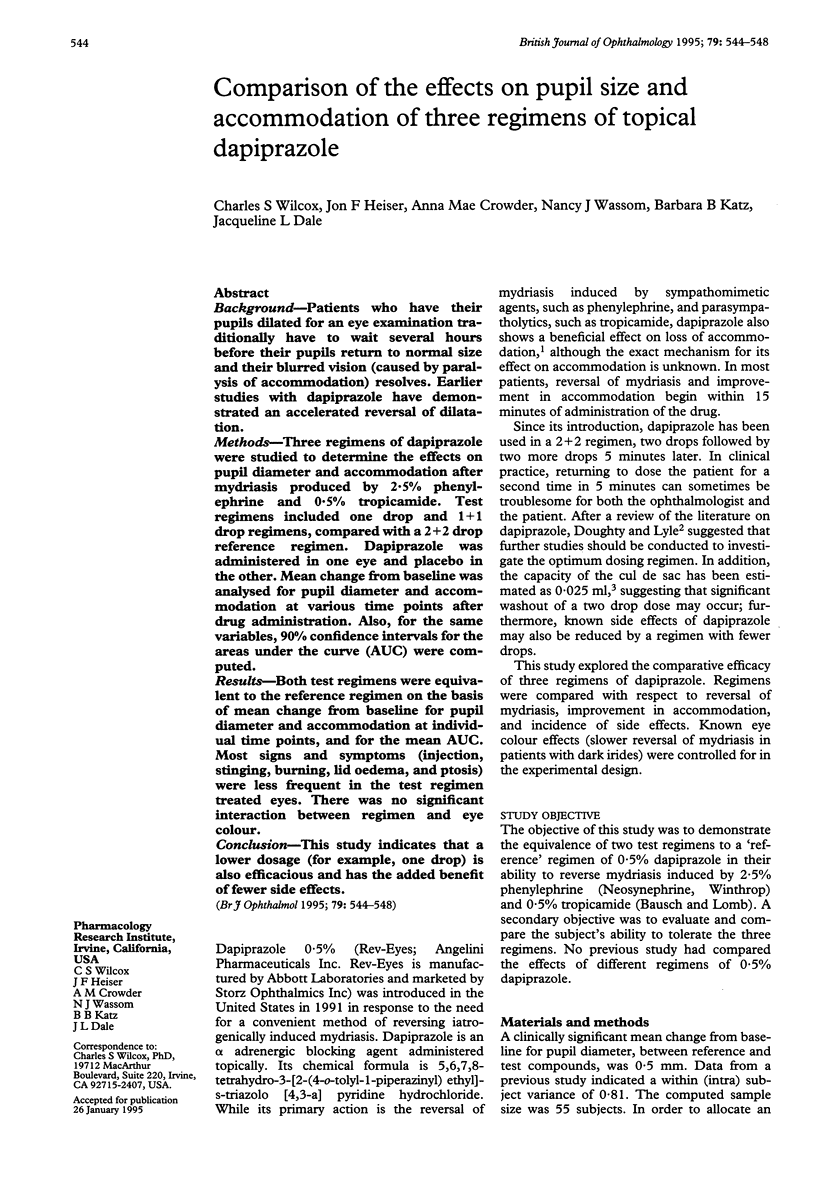
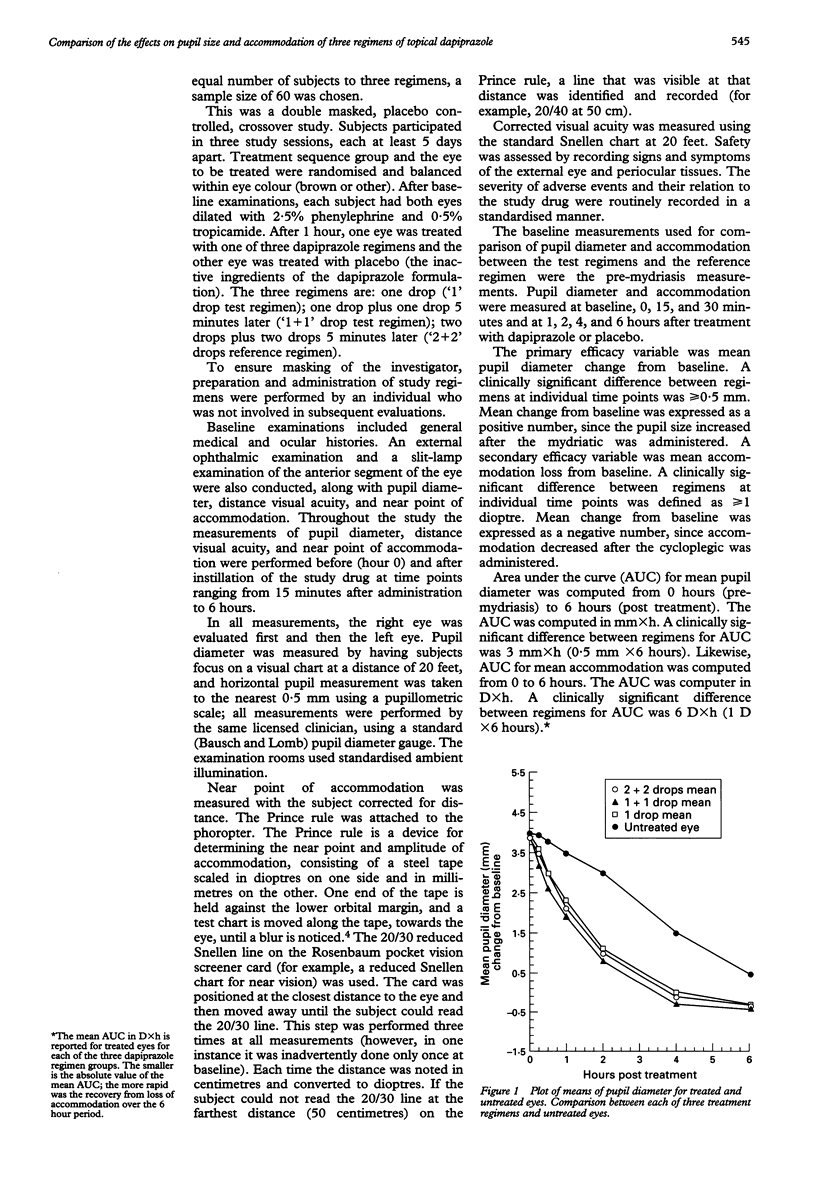
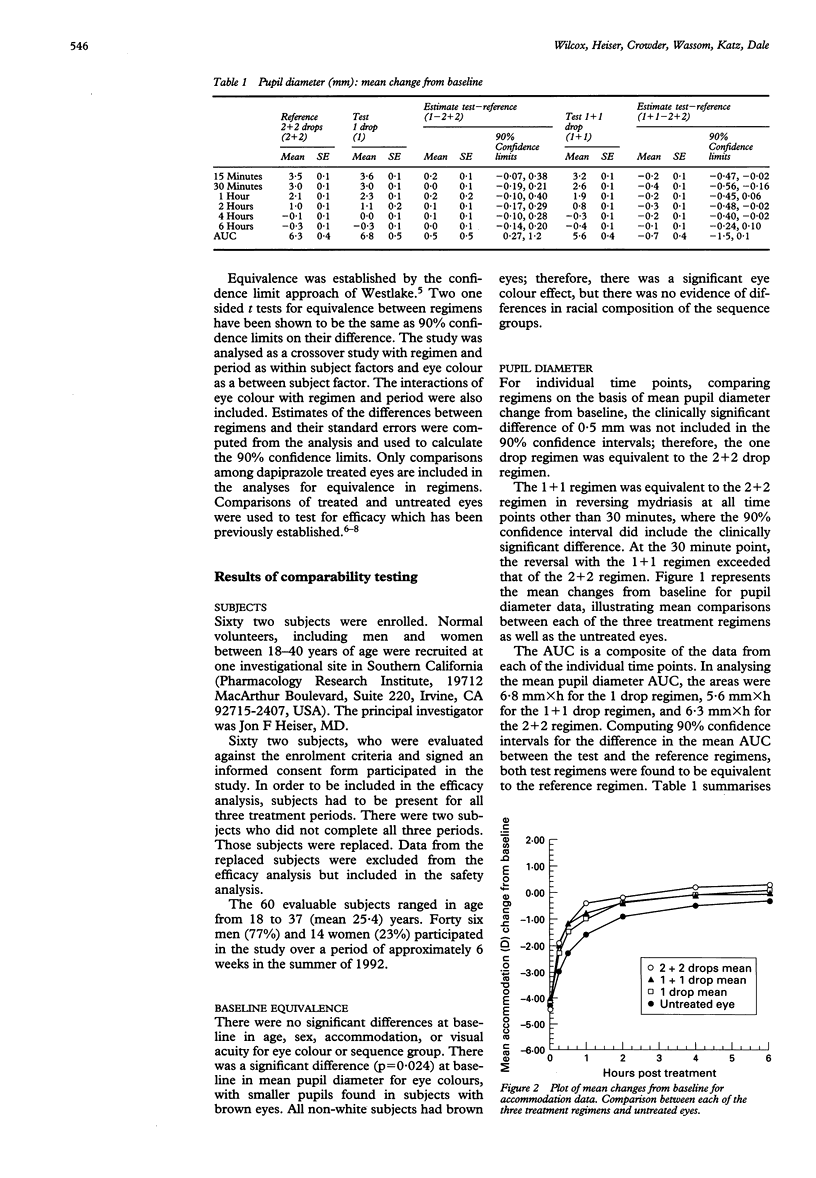
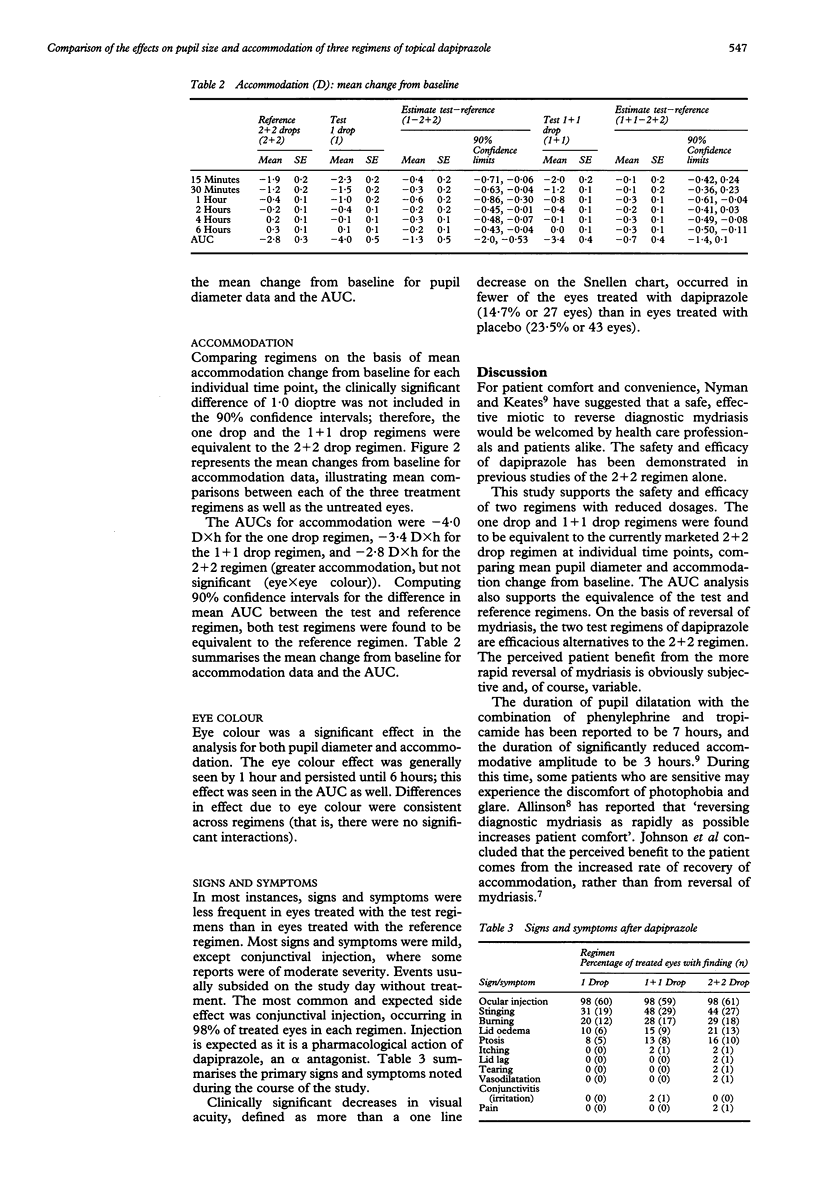
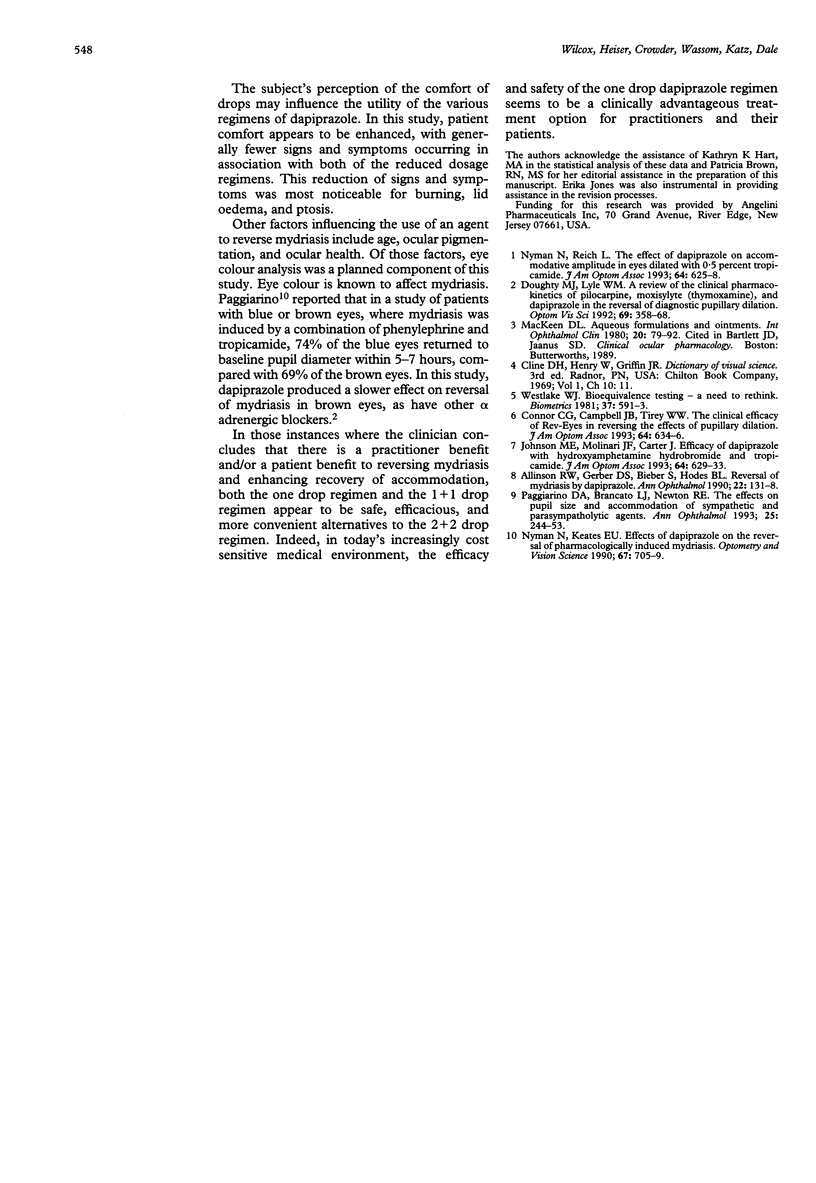
Selected References
These references are in PubMed. This may not be the complete list of references from this article.
- Allinson R. W., Gerber D. S., Bieber S., Hodes B. L. Reversal of mydriasis by dapiprazole. Ann Ophthalmol. 1990 Apr;22(4):131-3, 138. [PubMed] [Google Scholar]
- Connor C. G., Campbell J. B., Tirey W. W. The clinical efficacy of Rev-Eyes in reversing the effects of pupillary dilation. J Am Optom Assoc. 1993 Sep;64(9):634–636. [PubMed] [Google Scholar]
- Doughty M. J., Lyle W. M. A review of the clinical pharmacokinetics of pilocarpine, moxisylyte (thymoxamine), and dapiprazole in the reversal of diagnostic pupillary dilation. Optom Vis Sci. 1992 May;69(5):358–368. doi: 10.1097/00006324-199205000-00005. [DOI] [PubMed] [Google Scholar]
- Johnson M. E., Molinari J. F., Carter J. Efficacy of dapiprazole with hydroxyamphetamine hydrobromide and tropicamide. J Am Optom Assoc. 1993 Sep;64(9):629–633. [PubMed] [Google Scholar]
- MacKeen D. L. Aqueous formulations and ointments. Int Ophthalmol Clin. 1980 Fall;20(3):79–92. [PubMed] [Google Scholar]
- Nyman N., Keates E. U. Effects of dapiprazole on the reversal of pharmacologically induced mydriasis. Optom Vis Sci. 1990 Sep;67(9):705–709. doi: 10.1097/00006324-199009000-00009. [DOI] [PubMed] [Google Scholar]
- Nyman N., Reich L. The effect of dapiprazole on accommodative amplitude in eyes dilated with 0.5 percent tropicamide. J Am Optom Assoc. 1993 Sep;64(9):625–628. [PubMed] [Google Scholar]
- Paggiarino D. A., Brancato L. J., Newton R. E. The effects on pupil size and accommodation of sympathetic and parasympatholytic agents. Ann Ophthalmol. 1993 Jul;25(7):244-9, 253. [PubMed] [Google Scholar]


